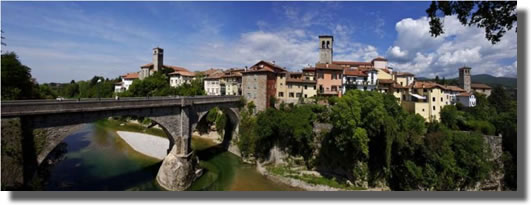CIVIDALE DEL FRIULI
Buffer Zone
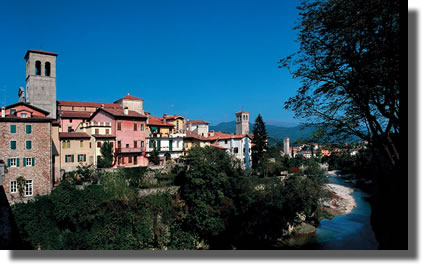 The town centre and other urban features date back the 6th and 7th century; they are privileged and paradigmatic elements speaking of the Longobard integration system in town and of the changes made
The town centre and other urban features date back the 6th and 7th century; they are privileged and paradigmatic elements speaking of the Longobard integration system in town and of the changes made
to the urban fabric.
Cividale and the Duchy of Friuli are the places where the most tangible evidence of the Longobard presence in Italy are concentrated.
More than elsewhere, Cividale and its surroundings bear important and significant traces of the cultural traditions of the Longobards, which were brought here by the first generations of migrations whose funerary finds are still present.
The town centre and other urban features date back the 6th and 7th century; they are privileged and paradigmatic elements speaking of the Longobard integration system in town and of the changes made to the urban fabric.
It is well know how large the Longobard City of Cividale was contained in its ancient walls, which are the limit of the proposed Buffer Zone as is the existence of a number of important monuments the main two being the Gastaldaga and the Episcopal Complex that constitute the Property applying for WHL.
- THE WALLS
- THE AREA OF DUCAL COURT
- THE CHURCHES OF THE LONGOBARD ARISTOCRACY
- THE BUILD-UP AREA
- URBAN BURIALS AND LONGOBARD PERIURBANE NECROPOLISES
- HISTORICAL CENTRE
- THE NATISONE RIVER
THE WALLS
Thanks to a number of braces, the old walls of the Roman Forum Iulii continued to be used during Longobard times and determined the shape of the Early Medieval urban settlement that can still be perceived in the current topography of the build-up area: the orientation of some buildings and roads reflects that of the original fortification.
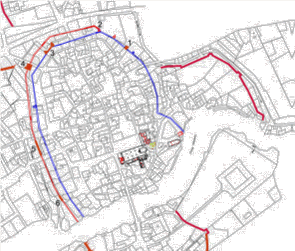
Plan of Cividale with indication of intervention areas

Pre-conditions of the historical walls
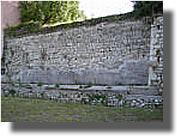 Area North East |
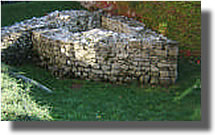 Area Canussio |
Maintenance projects and intervention have been adopted on visible parts of the first circle of walls to improve knowledge and use of the walls.

Application of surveys and 3D models: the virtual reality

The stratigraphic analysis
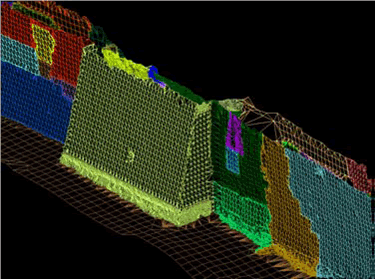
Survey with laser scanner and 3D modeling
Little documentation remains on the ruins of the bailey that have been identified in the past in some places in the urban centre. One part, which has recently been investigated (in 1998 and in 2001), is still visible.
In the Canussio palace, near the Northern city gate, some tens of meters of a section of the wall and a tower have been enhanced and can now be visited. They are likely to date back the Late-Republican period and were reinforced in the Late-Antique Early Middle Ages by doubling the wall, adding a triangular bulwark to the old tower and building a new polygonal tower. This was a general reshaping of the town walls that enabled their use during the Longobard period.
THE AREA OF DUCAL COURT
There is another monument and centre of power in town, in addition to the Gastaldaga and the Episcopal Complex: the Longobard ducal court.
Supposedly, it was located in the area near the Church of San Giovanni Evangelista, close to the Xenodochio built by Duke Rodoaldo at the end of the 7th century, perhaps in an area that was under the Duke’s jurisdiction.
San Giovanni in Xenodochio area
Some think that the duke’s court extended southwards up to the Church of Santa Maria di Corte, whose name is supposed to come from the fact it was part of the court itself [‘corte’ is the Italian for ‘court’]. Others argue that, given the location of the church in the Patriarchal court, the ducal premises were located in a more central area, near Piazza Paolo Diacono, where a leading dignitary’s tomb was found the so-called Duke Gisulf was buried there towards the half of the 7th century.
THE CHURCHES OF THE LONGOBARD ARISTOCRACY
In addition to the Duomo and the churches of the Gastaldaga, other places of worship were important among the many monuments of the town of Cividale.
In some cases they were built by the Longobards, in others they were privileged burial places. They were renewed thanks to local notables, witness the 7th century statues exhibited in the Christian Museum and the National Archaeological Museum.
• Dedicated to Saint John the Evangelist, San Giovanni in Xenodochio was built in the ducal area probably during the Early Middle Ages. It was completely renovated in the 19th century and is currently undergoing restoration.
• Santa Maria di Corte, which can be related to the Duke or the Patriarch, was first mentioned in 1122. Its origin is not known, yet, in the vicinity, Early Middle Ages fragments of sculptures were found. They probably belonged to an ancient building of worship. The current cast of features is 17th century. The bell tower and some frescoes in the nave witness the Romanesque period.

Santa Maria di Corte
• San Salvatore is remembered to have been located in the proximity of a town gate (porta sancti Salvatoris) in the 11th and 12th century. In the church there is an inscription dedicated to Saint Sylvester, which is still visible and located along the walls. The old church of San Salvatore may have owned a number of sculptures dating from the Late Longobard period (8th century), discovered in this part of the town, among which supposedly there is a fragment of a “Tegurium” of a baptismal font and an important slab.
• San Martino was built immediately at the town gate along the ancient Roman way from Aquileia, where an important Longobard cemetery was found (the necropolis of Piazza della Resistenza). In 1661 two Longobard tombs were discovered by chance near the church.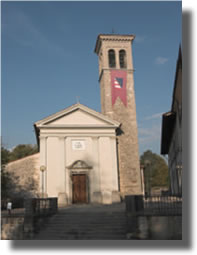
San Martino
Their rich treasure went missing but were made up of arms, jewellery, gold threads, a bone comb and a gold cross. They are clear evidence of how old the building of worship is.
• San Pietro ai Volti was probably of very old origin, built over one of the preexisting medieval gates which was built over a roman city gate. Elements of Longobard burials were found in the vicinity witnessing a sepulchral area used during the 7th century. The church was pulled down in the 18th century and its name refers to the 17th century church dedicated to the Redeemer that was located in this same area, yet outside the walls.
• Santi Pietro e Biagio church rises on the layout of the road that goes out of the city and runs along the Natisone river in the North-East. Rebuilt in the 16th century, it maintains the foundations of the original Early Middle Ages structure that were found in recent excavations. The structure is now marked on the floor of the church.
THE BUILD-UP AREA
Particularly important are the structures that belonged to the palaces build between the 5th and 6th centuries in areas that were central also in the Longobard town planning.
It is the case of the palace in Piazza Paolo Diacono where, as mentioned above, the tomb of Gisulf was placed or of the structures near the Palazzo Soberli, North of the Cathedral square, near the Episcopal complex.
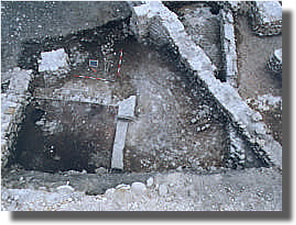
View of the roman building and Early middle ages burial in the area of Corte Romana
Recent investigation carried out in the context of building works in the area called Corte Romana (Roman Court) in the North-West sector of the town, has revealed an interesting integration of Longobard living and burial units in the Roman town fabric: in addition to the reuse of the ancient structures and their adaptation with humble or perishable materials as was custom at the time, traces of a lower-floor hut (Grubenhaus) were discovered for the first time in town.
This is a type of house that was very common in the Germanic culture, that can be found in Italy starting from the period of people’s migrations.
When they arrived in Cividale, the Longobards started burying the dead both in areas used by the local population and in new ones.
The most ancient tombs (the last quarter of the 6th century beginning of the 7th century) were located in the suburban area in the North-East (necropolis of Cella – San Giovanni), in the North (necropolis of San Mauro and in the nearby of the railway) and in the West of the city (necropolis of Gallo and San Stefano) and later in the 7th century they appeared in the town centre and in the South-East area (church of San Martino, necropolis of Piazza della Resistenza, San Pantaleone hill) and in the South-West of Cividale (Grupignano).
In the Longobard suburban necropolis there were three different situations: the continuous use of a Roman necropolis, at first used for cremation and later for burial (Cella San Giovanni), the creation of new necropolis (San Mauro, railway, Gallo and Santo Stefano) and the reuse of a Roman necropolis for cremation (in the area of the Piazza della Resistenza).
In town Longobard and Romance burials are well known both in disuse structures (Piazza Paolo Diacono, Piazza San Francesco, Palazzo dei Provveditori, Residence of the Roman Court) and in sepulchral areas near the buildings of worship (Duomo, San Pietro) or inside churches (San Giovanni in Valle), as is the case for other places of worship located just outside the walls (San Martino and San Pietro and Biagio).
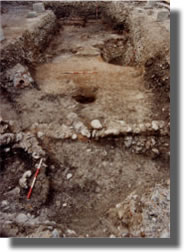
Among urban burials, the tomb of Gisulf plays a particularly important role. Dating back to the 7th century, it is a monumental burial that was accidentally found in 1874. The entombed had been buried in a wooden coffin inside a LateRoman stopgap sarcophagus made of Istria stone with a cover in marble, closed up in a large brick crate sealed with a Roman architectural element made of Aurisina stone. The accoutrements of the tomb, now exhibited in the National Archaeological Museum, is among the richest in
Cividale and Longobard Italy in general: among other things there are gold threads decorating the clothes and a gold ring set with a Roman coin, as a symbol of the high social level of the dead.
HISTORICAL CENTRE
Beyond the Longobard mark of its historical centre, characterised by a high-quality architectural urban fabric, Cividale has some important remians of other periods: from the ruins of the Roman Forum Iulii to the structure of the walls of the Quarters that re-defined the urban space in the Early Middle Ages, and the Renaissance and modern monumental architectures, such as the Palazzo dei Provveditori Veneti and the Duomo.
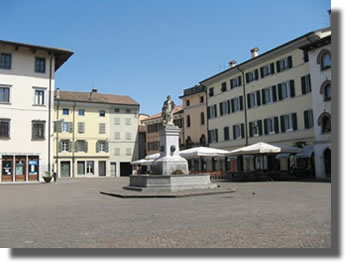 The central Piazza Paolo Diacono |
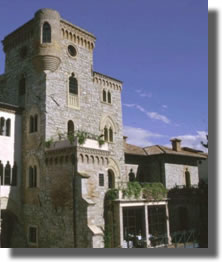 The Canussio castle |
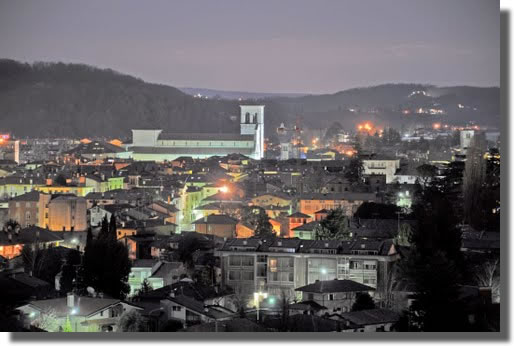
THE NATISONE RIVER
The Natisone river runs into the deep gorge dug along the Southern border of the town and is a valuable natural feature classified as an area of great environmental interest that wonderfully merges with the urban.
